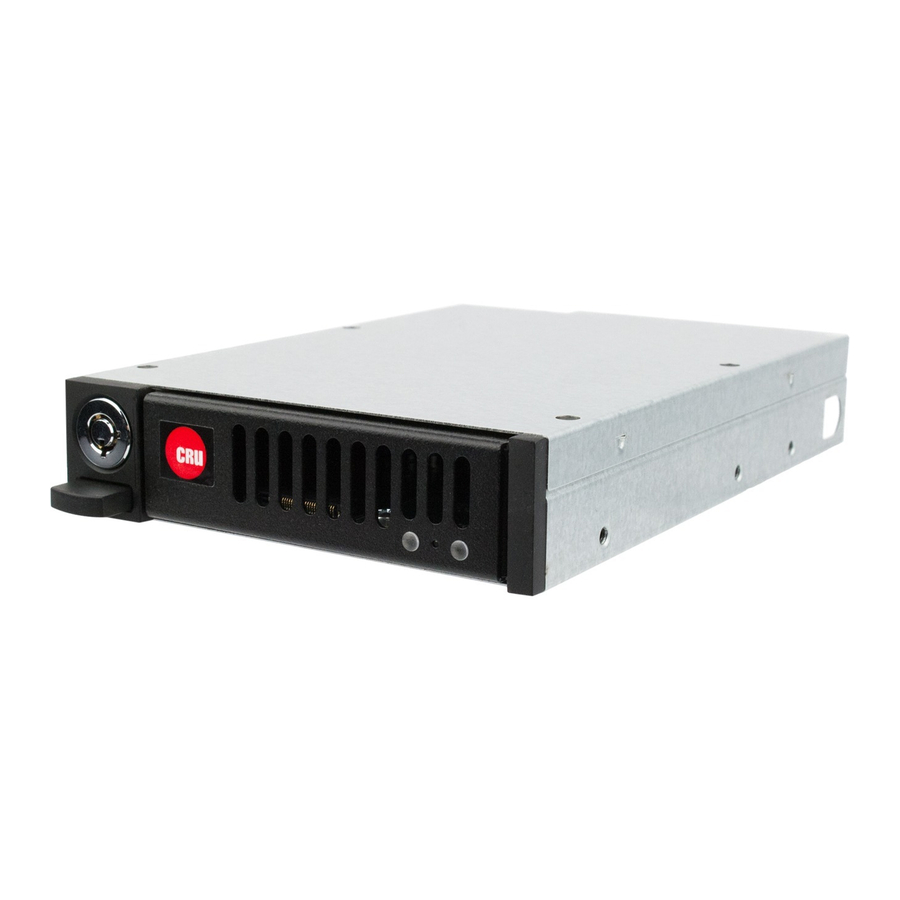
Table of Contents
Advertisement
Quick Links
Data Express
Quick Start Guide
Features
•
Frame and removable carriers for new PCIe/NVMe drives
•
Carriers for both M.2 and U.2 PCIe/NVMe drive types
•
Supports 4 PCIe Gen 3 lanes
•
Physical lock and key secures the drive yet allows for easy
removability and transport
•
Efficient airflow design
•
Blazing fast 32 GT/s (31.5 Gbps) transfer speeds
QX310
®
Advertisement
Table of Contents

Summary of Contents for CRU Data Express QX310
- Page 1 Data Express QX310 ® Quick Start Guide Features • Frame and removable carriers for new PCIe/NVMe drives • Carriers for both M.2 and U.2 PCIe/NVMe drive types • Supports 4 PCIe Gen 3 lanes • Physical lock and key secures the drive yet allows for easy removability and transport •...
-
Page 2: General Information
Connect one end of an SFF-8643 cable to your PCIe card adapter and the other end to the QX310 receiving frame. SFF-8643 PCIe adapter cards and cables, as well as a 5.25” bay adapter accessory, are available for purchase on the QX310 product page at cru-inc.com. -
Page 3: Basic Operation
Power on the computer if you have not already done so. Your Data Express QX310 is now ready to use! If the media inside is already formatted, it can be used right away. If the media is brand new or its format is not compatible with your computer, the media will need to be formatted before being used. - Page 4 CRU or its suppliers be liable for any costs of procurement of substitute products or services, lost profits, loss of information or data, computer mal- function, or any other special, indirect, consequential, or incidental damages arising in any way out of the sale of, use of, or inability to use any CRU product or service, even if CRU has been advised of the possibility of such damages.














Need help?
Do you have a question about the Data Express QX310 and is the answer not in the manual?
Questions and answers